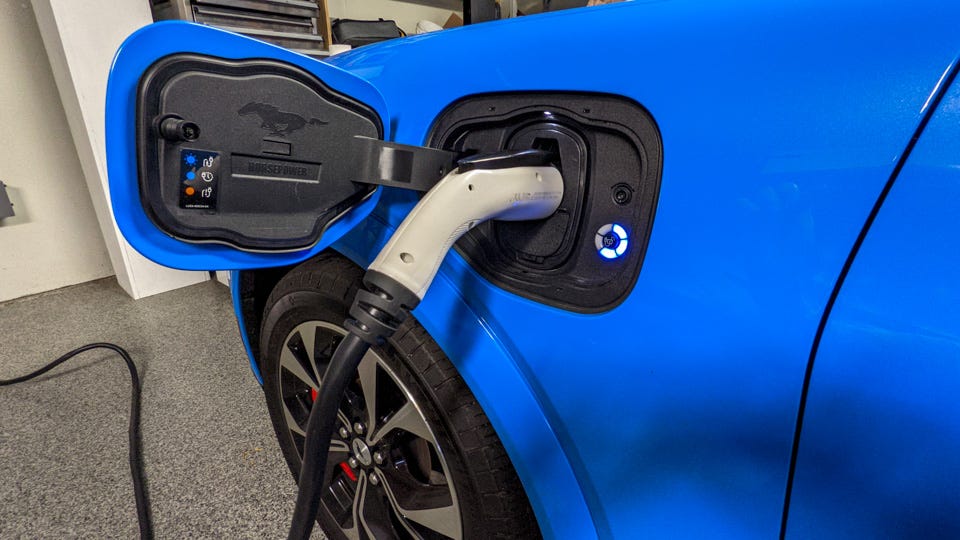Electricity is the way of the future. More and more vehicles are being built to run on renewable energy, and automakers are taking notice. Once you’ve decided on an electric vehicle, the next step is to choose an appropriate charger. Electric vehicle chargers are not a homogenous commodity. There may be significant differences in the available choices, and you may end up with a charger you don’t like.
As it pertains to charging stations for electric vehicles, consumers have a wide variety of choices. Think about how quickly you need your vehicle charged, how much you’re ready to pay, whether or not you want extra features, where you’ll place the charger, and how secure it is.
What is an EV charger?
Plug-in hybrid vehicles need special equipment called electric car chargers to replenish their depleted batteries and keep them running. Electric vehicle chargers may be divided into two broad categories: Level 1 and Level 2.
In contrast to Level 2 chargers, which need a 240-volt outlet, Level 1 chargers may be used with any ordinary home outlet. As EVs’ popularity grows, more manufacturers have released their versions of EV chargers. Electric vehicle (EV) chargers may be broken down into three main groups:
1. Electric Vehicle Charger for Home:
The home charger is the first and most typical kind, and the garage is a common location for home charging stations. They’re simple to set up and make it easy to charge your automobile while you sleep.
Level 2 chargers, the most common at home, need a 240-volt power source. However, Level 1 chargers are also readily accessible. Although Level 1 chargers are more affordable and simpler to set up, they charge batteries more slowly, thus decreasing their lifespan. In-home EV chargers are available for your convenience. Chargers may be either attached to a device or used independently.
2. The Commercial Electric Vehicle Charger:
This electric vehicle (EV) charging stations are installed in commercial spaces, including hotels, malls, and restaurants. They provide an easy and accessible option for workers or customers to charge their automobiles and are often situated in a central area.
You may choose between Level 1 and Level 2 chargers. Commercial Level 1 chargers are more affordable and less complicated to set up, but they charge batteries more slowly. However, commercial EV charging of Level 2 is more costly and needs a 240-volt outlet to work, but it can charge batteries much faster.
3. Public Electric Vehicle Chargers:
The public EV charger is the third variety. Airports, shopping centers, and parks are just a few of the public spaces where you may use a public charger. They allow drivers to top recharge their batteries without having to return home.
Level 1 and Level 2 chargers are available in public locations. Public charging stations with a Level 1 output are less complicated and cheaper to set up, but they charge batteries much slower. A Level 2 public charger will cost more and need a 240-volt outlet, but it will charge your battery twice as fast.
How to pick the suitable EV Charger?
Picking the best EV charger for your vehicle and requirements may be daunting. Therefore, we’ve compiled this short manual of helpful hints to assist you in making this crucial choice:
· Consider the cost:
Cost is an essential factor in each purchase we make, and it will be no different here. Today’s market offers many choices that may be tailored to any spending plan. Depending on the needs and the existing electrical infrastructure, the price of an electric vehicle charging station may vary widely. Depending on the preferences of the owner, the cost of an electric vehicle charging station may range from:
- The standard household outlet in the United States is 120V, and all EVs come with a basic cable that can be plugged into this outlet. This solution will cost you next to nothing if you have a 120V plug in your garage. As a result, if you have even a modest commute, you will need a quicker charging setup, as this one will only allow for charging speeds of 3-5 miles per hour.
- Level 2 EVSEs (Electric Vehicle Service Equipment) are the most popular choice among EV owners since they may be used at home. 240V is needed for the Level 2 chargers (NEMA 6, which many clothes dryers use). Total costs for a Level 2 charging station, including hardware and labor, are roughly $1,000.
· Tethered or Un-tethered:
Home chargers may be linked to an outlet in the wall or completely wireless. Because the tethered charger is always near your charging device and the wire is always there, it’s a breeze to use. If you choose the tethered route, be sure it’s compatible with your electric vehicle.
However, un-tethered chargers merely function as sockets and do not have a cord. They’re adaptable and may be used with either a Type 1 or Type 2 vehicle. Our knowledgeable staff is here to assist you in making the best choice for your car and requirements.
· Aesthetics matter a lot:
Although a charger’s key characteristic is its usefulness, many individuals also seek a charger with aesthetic appeal. There is a wide range of different sized and shaped EV chargers on the market. The location of your charger is an important issue. If you want to put it in a visible location, such as the front of your house, you may want to consider the aesthetics of your choice. Since the charger will be permanently installed in your home, you should explain its aesthetics and practicality. When deciding on a look and a size, keeping proper proportions in mind is essential.



